Roof
Home » Exterior » Roof
 How long do Terracotta Tile Roofs Last?
With proper care the terracotta tile roof will last thousands of years.
How long do Terracotta Tile Roofs Last?
With proper care the terracotta tile roof will last thousands of years.
 Sagging, Bowed or Wavy Roof – Check the Attic for 6 Things
The structural integrity of a roof is critical and one of the key areas to check is the attic
Sagging, Bowed or Wavy Roof – Check the Attic for 6 Things
The structural integrity of a roof is critical and one of the key areas to check is the attic
 Wavy or Sagging Roof May Be a Foundation Problem: 5 Things to Check
Wavy or sagging roofs can be a warning sign that there are foundation problems with a house.
Wavy or Sagging Roof May Be a Foundation Problem: 5 Things to Check
Wavy or sagging roofs can be a warning sign that there are foundation problems with a house.
 Roof Certification – Do I Need One ?
Roof Certification - What Is It And Do I Need One for My Loan ?
Roof Certification – Do I Need One ?
Roof Certification - What Is It And Do I Need One for My Loan ?
 Roof Waviness: Causes of Wavy Roofs
Waviness may relate how the roof was originally framed or because...
Roof Waviness: Causes of Wavy Roofs
Waviness may relate how the roof was originally framed or because...
 Cut, Modified or Damaged Roof Trusses
Trusses that get cut, i.e. by an HVAC contractor or remodeling contractor may fail or sag over time.
Cut, Modified or Damaged Roof Trusses
Trusses that get cut, i.e. by an HVAC contractor or remodeling contractor may fail or sag over time.
 Two or More Roof Coverings: 2 May Be OK Sometimes, However, Look For These Problems
A second or third roof covering may weigh too much for the rafters and cause sagging or damage.
Two or More Roof Coverings: 2 May Be OK Sometimes, However, Look For These Problems
A second or third roof covering may weigh too much for the rafters and cause sagging or damage.
 Moss on Roofs
Enchanting story book "English Cottages" with moss all over the roof may look charming, however, too much moss will shorten the life of a roof. There are a variety of ways you can...
Moss on Roofs
Enchanting story book "English Cottages" with moss all over the roof may look charming, however, too much moss will shorten the life of a roof. There are a variety of ways you can...
 Clogged Gutters: Clean And Check For Siding Damage
Siding may become damaged or occasionally water may intrude into the wall.
Clogged Gutters: Clean And Check For Siding Damage
Siding may become damaged or occasionally water may intrude into the wall.
 Water Puddling or Standing On Flat Roof
Deterioration or leaking may occur if water stands on a roof too long. A little puddling is acceptable provided that it is not too deep.
Water Puddling or Standing On Flat Roof
Deterioration or leaking may occur if water stands on a roof too long. A little puddling is acceptable provided that it is not too deep.
 Gravel Voids On Flat Roofs May Shorten the Life Expectancy or Cause Leaking
Gravel voids can cause a roof to leak, shorten it's life expectancy and deteriorate the tar or building paper.
Gravel Voids On Flat Roofs May Shorten the Life Expectancy or Cause Leaking
Gravel voids can cause a roof to leak, shorten it's life expectancy and deteriorate the tar or building paper.
 Clogged Drains and Debris Build-up on Flat Roofs
Flat type roofs often have leaves and other debris that gathers on them overtime. If the leaves and debris are not occasionally removed, the drains may get clogged or restricted by the debris. If water builds-up, leaking may occur and if the water builds up high enough, it can cause structural damage.
Clogged Drains and Debris Build-up on Flat Roofs
Flat type roofs often have leaves and other debris that gathers on them overtime. If the leaves and debris are not occasionally removed, the drains may get clogged or restricted by the debris. If water builds-up, leaking may occur and if the water builds up high enough, it can cause structural damage.
 Roof Jacks; Help Prevent Rain Water From Penetrating The Roof
Pipe or vents running through the roof should have proper roof jacks to help keep water from penetrating the roof.
Roof Jacks; Help Prevent Rain Water From Penetrating The Roof
Pipe or vents running through the roof should have proper roof jacks to help keep water from penetrating the roof.
 Kickers – Roof Flashing That Prevents Water From Entering a Homes Wall
Kickers – Roof Flashing That Prevents Water From Entering a Homes Wall
 Crickets Help Divert Water Where the Chimney Penetrates the Roof
Metal flashing where a chimney penetrates a roof helps divert water so as to reduce water puddling or leaks in that area.
Crickets Help Divert Water Where the Chimney Penetrates the Roof
Metal flashing where a chimney penetrates a roof helps divert water so as to reduce water puddling or leaks in that area.
 Sagging Roof – Is It Damaged Rafters or Trusses, Too Much Weight, or Design?
What type of roofing material is on the roof? Heavy tile, two layers of shingles, or has heavy snow loads and age caused a little sagging?
Sagging Roof – Is It Damaged Rafters or Trusses, Too Much Weight, or Design?
What type of roofing material is on the roof? Heavy tile, two layers of shingles, or has heavy snow loads and age caused a little sagging?
 Tiles That Have Slipped Out of Position: Check the Building Paper for Damage When Repairing
Tiles That Have Slipped Out of Position: Check the Building Paper for Damage When Repairing
 Roof Tiles Cracked, Damaged or Missing; When Repairing Be Sure To Check The Building Felt Under The Tile
Cracked and damaged tile can be easily repaired or replaced, but the roof may still leak because of the underlayment under the tile.
Roof Tiles Cracked, Damaged or Missing; When Repairing Be Sure To Check The Building Felt Under The Tile
Cracked and damaged tile can be easily repaired or replaced, but the roof may still leak because of the underlayment under the tile.
 Composition Shingle Missing or Damaged: Check the “underlayment, Installation and the Roofs’ Sheeting
There is more to replacing tore and damaged shingles, then just putting on new shingles.
Composition Shingle Missing or Damaged: Check the “underlayment, Installation and the Roofs’ Sheeting
There is more to replacing tore and damaged shingles, then just putting on new shingles.
 General Roof Information
There are a few things we all should know about our roof. For example, what can affect the health or life expectancy.
General Roof Information
There are a few things we all should know about our roof. For example, what can affect the health or life expectancy.
 How long do Terracotta Tile Roofs Last?
With proper care the terracotta tile roof will last thousands of years.
How long do Terracotta Tile Roofs Last?
With proper care the terracotta tile roof will last thousands of years.
 Sagging, Bowed or Wavy Roof – Check the Attic for 6 Things
The structural integrity of a roof is critical and one of the key areas to check is the attic
Sagging, Bowed or Wavy Roof – Check the Attic for 6 Things
The structural integrity of a roof is critical and one of the key areas to check is the attic
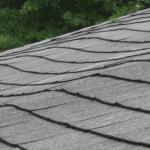 Wavy or Sagging Roof May Be a Foundation Problem: 5 Things to Check
Wavy or sagging roofs can be a warning sign that there are foundation problems with a house.
Wavy or Sagging Roof May Be a Foundation Problem: 5 Things to Check
Wavy or sagging roofs can be a warning sign that there are foundation problems with a house.
 Roof Certification – Do I Need One ?
Roof Certification - What Is It And Do I Need One for My Loan ?
Roof Certification – Do I Need One ?
Roof Certification - What Is It And Do I Need One for My Loan ?
 Roof Waviness: Causes of Wavy Roofs
Waviness may relate how the roof was originally framed or because...
Roof Waviness: Causes of Wavy Roofs
Waviness may relate how the roof was originally framed or because...
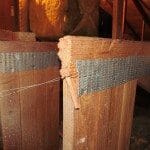 Cut, Modified or Damaged Roof Trusses
Trusses that get cut, i.e. by an HVAC contractor or remodeling contractor may fail or sag over time.
Cut, Modified or Damaged Roof Trusses
Trusses that get cut, i.e. by an HVAC contractor or remodeling contractor may fail or sag over time.
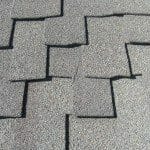 Two or More Roof Coverings: 2 May Be OK Sometimes, However, Look For These Problems
A second or third roof covering may weigh too much for the rafters and cause sagging or damage.
Two or More Roof Coverings: 2 May Be OK Sometimes, However, Look For These Problems
A second or third roof covering may weigh too much for the rafters and cause sagging or damage.
 Moss on Roofs
Enchanting story book "English Cottages" with moss all over the roof may look charming, however, too much moss will shorten the life of a roof. There are a variety of ways you can...
Moss on Roofs
Enchanting story book "English Cottages" with moss all over the roof may look charming, however, too much moss will shorten the life of a roof. There are a variety of ways you can...
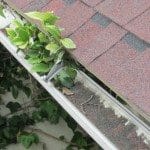 Clogged Gutters: Clean And Check For Siding Damage
Siding may become damaged or occasionally water may intrude into the wall.
Clogged Gutters: Clean And Check For Siding Damage
Siding may become damaged or occasionally water may intrude into the wall.
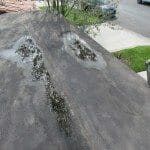 Water Puddling or Standing On Flat Roof
Deterioration or leaking may occur if water stands on a roof too long. A little puddling is acceptable provided that it is not too deep.
Water Puddling or Standing On Flat Roof
Deterioration or leaking may occur if water stands on a roof too long. A little puddling is acceptable provided that it is not too deep.
 Gravel Voids On Flat Roofs May Shorten the Life Expectancy or Cause Leaking
Gravel voids can cause a roof to leak, shorten it's life expectancy and deteriorate the tar or building paper.
Gravel Voids On Flat Roofs May Shorten the Life Expectancy or Cause Leaking
Gravel voids can cause a roof to leak, shorten it's life expectancy and deteriorate the tar or building paper.
 Clogged Drains and Debris Build-up on Flat Roofs
Flat type roofs often have leaves and other debris that gathers on them overtime. If the leaves and debris are not occasionally removed, the drains may get clogged or restricted by the debris. If water builds-up, leaking may occur and if the water builds up high enough, it can cause structural damage.
Clogged Drains and Debris Build-up on Flat Roofs
Flat type roofs often have leaves and other debris that gathers on them overtime. If the leaves and debris are not occasionally removed, the drains may get clogged or restricted by the debris. If water builds-up, leaking may occur and if the water builds up high enough, it can cause structural damage.
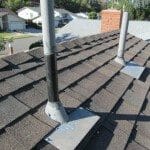 Roof Jacks; Help Prevent Rain Water From Penetrating The Roof
Pipe or vents running through the roof should have proper roof jacks to help keep water from penetrating the roof.
Roof Jacks; Help Prevent Rain Water From Penetrating The Roof
Pipe or vents running through the roof should have proper roof jacks to help keep water from penetrating the roof.
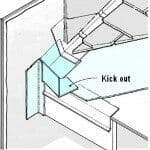 Kickers – Roof Flashing That Prevents Water From Entering a Homes Wall
Kickers – Roof Flashing That Prevents Water From Entering a Homes Wall
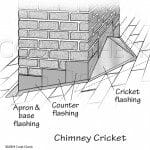 Crickets Help Divert Water Where the Chimney Penetrates the Roof
Metal flashing where a chimney penetrates a roof helps divert water so as to reduce water puddling or leaks in that area.
Crickets Help Divert Water Where the Chimney Penetrates the Roof
Metal flashing where a chimney penetrates a roof helps divert water so as to reduce water puddling or leaks in that area.
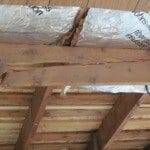 Sagging Roof – Is It Damaged Rafters or Trusses, Too Much Weight, or Design?
What type of roofing material is on the roof? Heavy tile, two layers of shingles, or has heavy snow loads and age caused a little sagging?
Sagging Roof – Is It Damaged Rafters or Trusses, Too Much Weight, or Design?
What type of roofing material is on the roof? Heavy tile, two layers of shingles, or has heavy snow loads and age caused a little sagging?
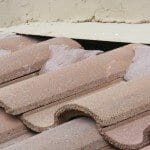 Tiles That Have Slipped Out of Position: Check the Building Paper for Damage When Repairing
Tiles That Have Slipped Out of Position: Check the Building Paper for Damage When Repairing
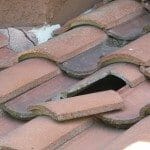 Roof Tiles Cracked, Damaged or Missing; When Repairing Be Sure To Check The Building Felt Under The Tile
Cracked and damaged tile can be easily repaired or replaced, but the roof may still leak because of the underlayment under the tile.
Roof Tiles Cracked, Damaged or Missing; When Repairing Be Sure To Check The Building Felt Under The Tile
Cracked and damaged tile can be easily repaired or replaced, but the roof may still leak because of the underlayment under the tile.
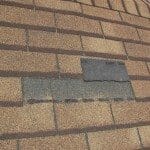 Composition Shingle Missing or Damaged: Check the “underlayment, Installation and the Roofs’ Sheeting
There is more to replacing tore and damaged shingles, then just putting on new shingles.
Composition Shingle Missing or Damaged: Check the “underlayment, Installation and the Roofs’ Sheeting
There is more to replacing tore and damaged shingles, then just putting on new shingles.
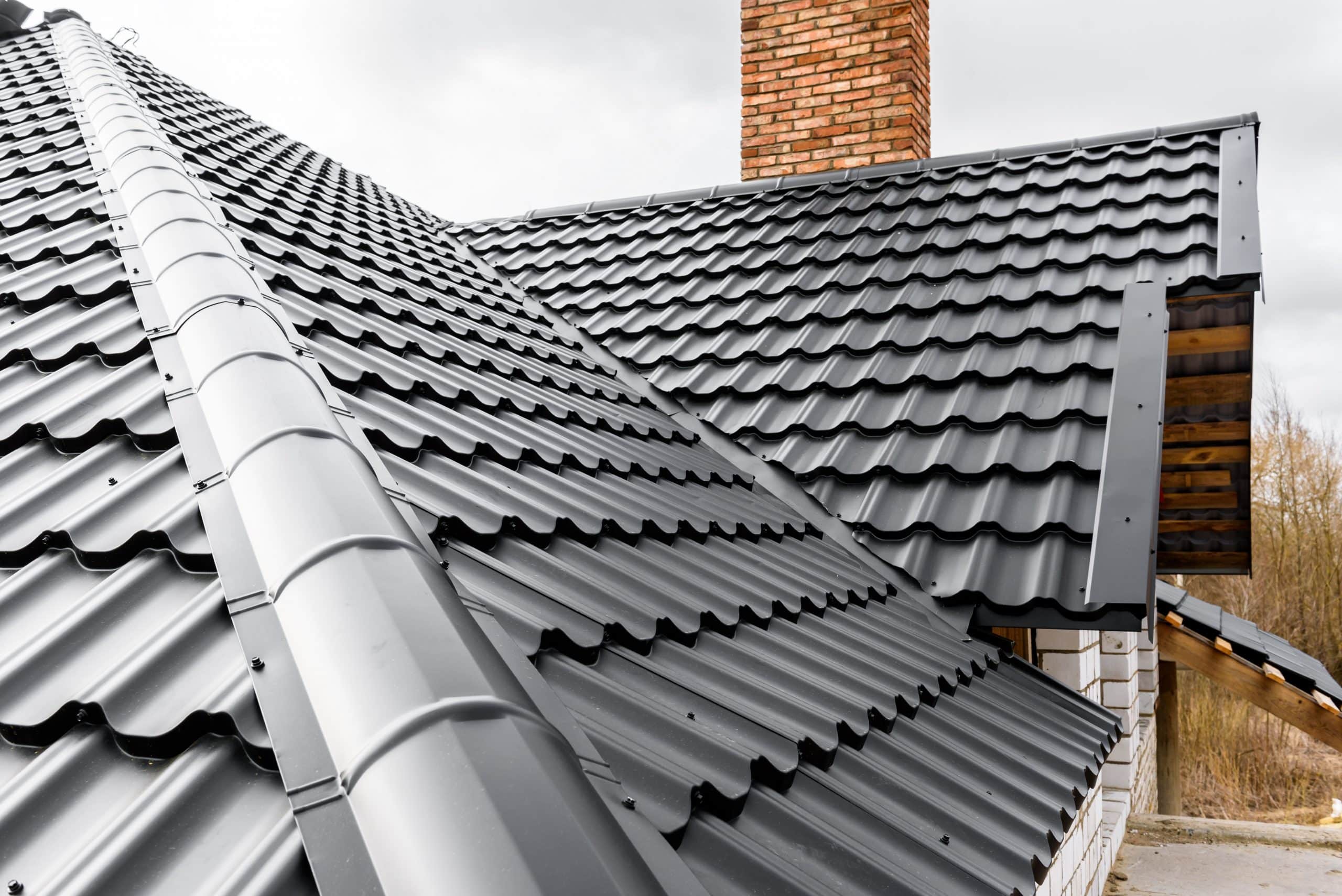 General Roof Information
There are a few things we all should know about our roof. For example, what can affect the health or life expectancy.
General Roof Information
There are a few things we all should know about our roof. For example, what can affect the health or life expectancy.